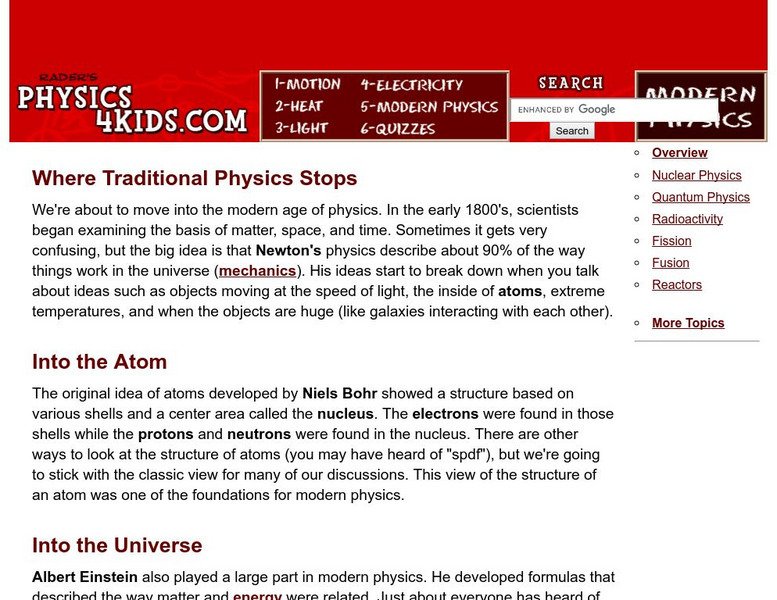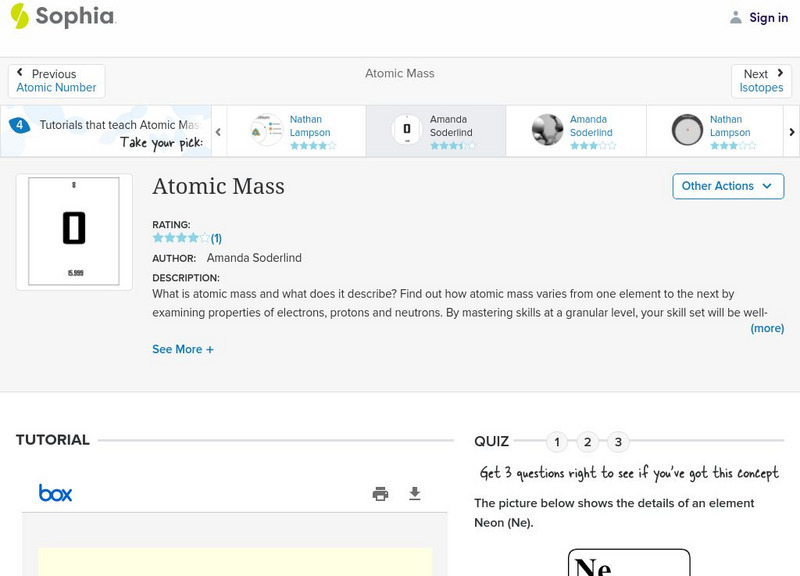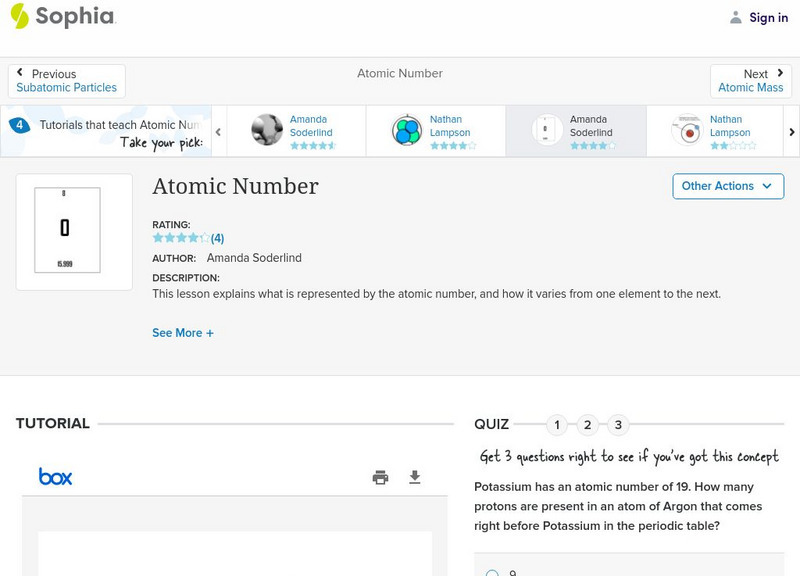Curated OER
Tunnel
From CERN, the world's largest particle accelerator, this site contains a description of the Proton Synchotron, a device used to accelerate protons for use in other machines in the accelerator complex.
Curated OER
Radio Frequency Cavity
From CERN, the world's largest particle accelerator, this site contains a description of the Proton Synchotron, a device used to accelerate protons for use in other machines in the accelerator complex.
Curated OER
[Bohr Model of Unununium]
A look at the transition metal unununium, which was renamed roentgenium in 2004. Includes basic information, including symbol, number, mass, melting and boiling points, and numbers of protons, electron, and neutrons.
Curated OER
Chien Shiung Wu (1912 1997), y.k. Lee, and l.w. Mo
The experiments of Columbia University physicists (left to right) Chien-shiung Wu (1912-1997), Y.K. Lee, and L.W. Mo confirmed the theory of conservation of vector current. In the experiments, which took several months to complete,...
Curated OER
Science Kids: Science Images: Hydrogen Atom
This is a simple picture of a hydrogen atom using the Bohr model. A negatively charged electron can be seen on the outside of the positively charged proton.
Curated OER
Science Kids: Science Images: Basic Atom Structure
This diagram shows a basic atom structure with an atom core, proton, neutron and electron.
Exploratorium
Exploratorium: Remote Control Roller
Students can make a empty soda can roll with an electrically charged balloon.
Lawrence Berkeley National Laboratory
Berkeley Lab: The Shell Model
This entry investigates the Shell Model in which the motion of each nucleon is governed by the average attractive force of all the other nucleons.
Lawrence Berkeley National Laboratory
Berkeley Lab: Cockroft Walton
Provides a description of the Cockroft-Walton accelerator built in 1932.
Lawrence Berkeley National Laboratory
Berkeley Lab: Basic Nuclear Science Information
Site provides the ABC's of nuclear science including radioactivity and gamma decay to fission and comic rays.
Thomas Jefferson National Accelerator Facility
Jefferson Lab: All About Atoms
The three basic particles that make up atoms are defined and illustrated.
Physics4kids
Physics 4 Kids: Where Traditional Physics Stops
We're about to move into the modern age of physics. In the early 1800's, scientists began examining the basis of matter, space, and time. Sometimes it gets very confusing, but the big idea is that Newton's physics describe about 90% of...
Sophia Learning
Sophia: Atomic Mass: Lesson 3
This lesson explains what is represented by the atomic mass, and how it varies from one element to the next. It is 3 of 4 in the series titled "Atomic Mass."
Sophia Learning
Sophia: Atomic Mass: Lesson 4
This lesson explains what is represented by the atomic mass, and how it varies from one element to the next. Module includes a slideshow and a quiz.
Sophia Learning
Sophia: Atomic Mass: Lesson 1
This lesson explains what is represented by the atomic mass, and how it varies from one element to the next. It is 1 of 4 in the series titled "Atomic Mass."
Sophia Learning
Sophia: Atomic Number: Lesson 3
This lesson explains what is represented by the atomic number, and how it varies from one element to the next. It is 3 of 7 in the series titled "Atomic Number."
Sophia Learning
Sophia: Atomic Number: Lesson 6
This lesson explains what is represented by the atomic number, and how it varies from one element to the next. It is 6 of 7 in the series titled "Atomic Number."
Sophia Learning
Sophia: Atomic Mass: Lesson 2
This lesson explains what is represented by the atomic mass, and how it varies from one element to the next. It is 2 of 4 in the series titled "Atomic Mass."
Sophia Learning
Sophia: Atomic Number: Lesson 5
This lesson explains what is represented by the atomic number, and how it varies from one element to the next. It is 5 of 7 in the series titled "Atomic Number."
Physics Classroom
The Physics Classroom: Static Electricity Review
This review from the Glenbrook South High School provides a series of questions on various topics associated with static electricity (such as electrical insulation). Answers and explanations are hidden, yet easily accessed from within a...
ClassFlow
Class Flow: Intro to Atoms
[Free Registration/Login Required] This flipchart was converted from Power Point and is used to introduce the history and concept of the Atom.
California State University
California State University: Hess' Law
Interactive site that generates random Hess's Law problems for you to solve. Allows you immediate feedback on your ability to use Hess's Law.
California State University
Cal State, Dominguez Hills: Balancing Chemical Reactions
An interactive tutorial on balancing equations.
Fun Brain
Fun Brain: Periodic Table Game
Do you know your elements and symbols? Test your knowledge of Earth's elements with this interactive Periodic Table of Elements game.
Other popular searches
- Protons Neutrons Electrons
- Protons, Neutrons, Electrons
- Protons, Neutron, Electrons
- Protons and Neutrons
- Protons, Electrons, Neutrons
- Electrons, Neutrons, Protons
- Electrons and Protons
- Atoms and Protons
- Protons Neutrons, Electrons
- Atoms Electrons Protons















